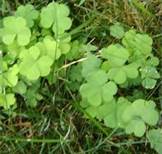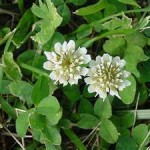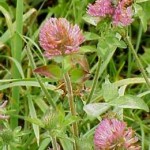In the 40’s and 50’s clover was a common component of lawn seed mixes. As a result, it is one of the most common weeds today.
Did you know that:
- Clover can be a perennial or an annual weed, depending on the species.
- There are many varieties of clover.
- White and red are the 2 major varieties.
- Its flowers attract bees and other insects.
- Clover is a shallow rooted weed with creeping stems and roots at the nodes.
- It reproduces by seeds and by creeping stolons.
- Clover does not do well in acidic soil.
- It can be an indication that the soil is lacking in nitrogen.
- It can tolerate a wide variety of soil conditions.
- It is capable of fixing its own nitrogen, which enables it to thrive in unfertilized areas.
Clover grows well in..
- Temperatures of 50-85 degrees
- Nitrogen depleted soil
- In moist areas
Below are some cultural ways to control clover:
- The primary control against clover is to make the lawn healthier to out-compete the clover.
- Let the grass grow taller – clover dies out in shade.
- Increase nitrogen and decrease phosphorous.
- Aerate and over-seed for proper drainage and to thicken the turf.
Don’t be run over with clover…
Call Sterling Insect & Lawn Control (207) 767-5555









